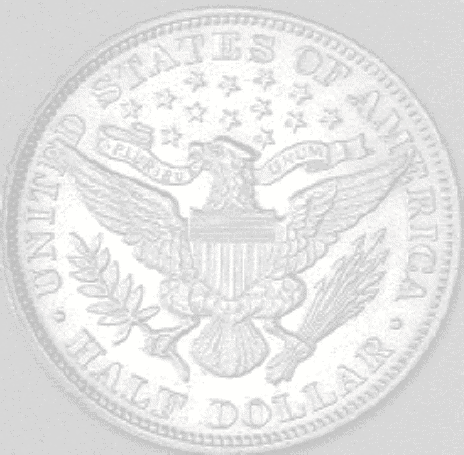
|
|
||
|
|
|
|
|
|
||

-53-
FOR BETTER OR WORSE:
A Glimpse or Two of Virtue
"It is an interesting fact,"
writes Mr. White, "that before the day of railroads, the exchanges of
bank notes between Boston and Providence were made in a canvas bag which
was carried in the boot of a state coach without other guard than the
driver, and that it was never molested, although on one occasion it was
delivered by the porter of the Suffolk Bank to a thief who passed
himself off as the stage driver's assistant. It was afterwards
recovered” (White, 331).
Mr. White again writes, "Mr. (Hugh) McCulloch,
afterwards Secretary of the Treasury, was President of the Fort Wayne,
Indiana branch bank. He says:
Fort Wayne was three good days' ride from Indianapolis, mostly through woods. For fifteen years, I made the journey on horseback and alone with thousands of dollars in my saddle bags, without the slightest fear of being robbed. I was well known upon the road and it was well known that I had money with me, and a good deal of it, and yet I rode unharmed through the woods and stopped for the night at the taverns and cabins on the way in perfect safety” (White, 38).
The Sub-Treasury System
The two privately owned "Banks of the United States" had shifted government deposits to state banks. After the Panic of 1837, the government was so embarrassed, the Treasury began to retain all government funds. From 1846, the "Independent Treasury" or the "Sub-Treasury" System was authorized, and until the Civil War, the United States government had no dealings with banks or bank notes. All payments to government and all disbursements by it were in specie (Foster, 98).
State Constitutions vs. the Banks
In his History of American Currency, Mr. William Sumner declared,
All the banks of the state schemers rested upon the notion of the "credit" of the state as a metaphysical entity, which could be called upon to do the work of capital, although capital cannot be produced without labor and frugality (Foster, 92).
Nine states had no banks in
1852 (Hepburn, 161). Illinois was without any banking facilities until
1851 and Wisconsin until 1853. Wisconsin and Iowa wrote clauses into
early drafts of their constitutions outlawing banks (Billington, 377).
Banks of Issue were prohibited in California by
state constitution (Scroggs, 185). When the rest of the country was on a
paper standard, California maintained a gold standard.
In 1837, while an independent Republic, Texas passed an
act prohibiting the circulation of promissory notes subject to a fine
from 5 "dollars" to 50 "dollars." When it was admitted to the Union, its
constitution contained a provision that read, "No corporate body shall
hereafter be created, renewed or extended with banking or discounting
privileges" (Scroggs, 112).
"The Power to Tax Is the Power to Destroy”
In order to bring the nation
out of economic chaos, the Chicago Tribune exhorted Congress to
"Tax the banks (state) out of existence” (Hammond, 733). On February 27,
1865, Senator Sherman speaking for his bill said, "The National Banks
were intended to supersede the state banks. Both cannot exist
together" (Hammond, 733). The National Banking Act destroyed state
issuance.
